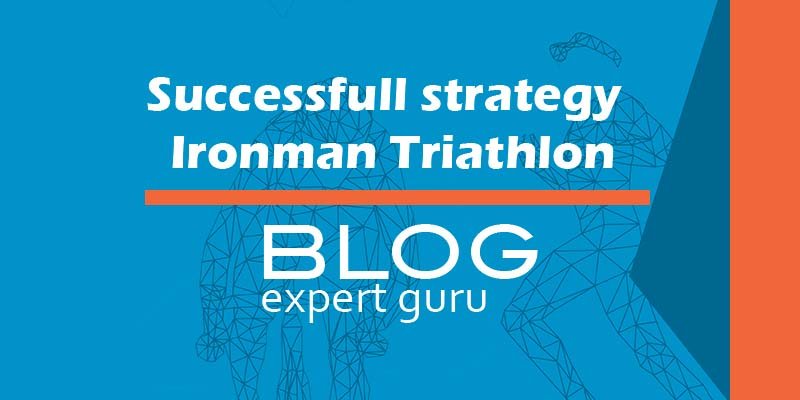Nutrition plays an important role in achieving a successful conclusion to an Ironman triathlon. After all, we do not have sufficient (glycogen) stock in our body to successfully complete the race without nutrition. Today, everyone is talking about more carbohydrates. 90, 100, 110 to even 120 g per hour. NutrID was the first to introduce these values in sports in 2017. More than 7 years ago. We already knew then that more carbohydrates would be the future. Why? Because there simply is no better fuel and the body’s supply is only limited to (approximately) 90 minutes of intensive exercise and research shows that glucose and fructose can pass through the intestinal wall separately. While it was initially assumed that sugar intake was limited to 60-70g per hour, this number could suddenly be multiplied by a factor of two! At least in theory for many, and for a small group in practice! To transport 60 g of fructose in addition to 60 g of glucose through your intestinal wall per hour, you need a ‘talented’ intestine. That is certainly not the formula for success for everyone. An individualistic approach remains necessary.
But we have made the first point for a successful ironman: With a higher carbohydrate intake (than the original intake of 60-70g per hour) you will perform better.
Now that intake is going to be increased, it is a good time to look at the duration of the event. And also by type of sport. It is easier to increase carbohydrate intake in the early hours of an event than at a later stage (after 4-5 hours) after the start. It is therefore recommended for a successful nutritional strategy in an ironman to consume more during cycling and to switch back during running. This is because the running part is at the end of a race and because it is more challenging to absorb carbohydrates during running due to the jerking movements associated with running.
For events that last longer (>4-5 hours), it is advisable to take more carbohydrates in the first hours and lower them in the following hours.
An aspect we will look at next is pacing. In other words, with what intensity do you perform the parts of your competition? The higher the intensity, the more attention the body pays to the muscles and the supply and drainage functions to them. The circulatory system prioritizes lungs and muscles at higher intensity. And it will restrict the blood flow to the gastrointestinal tract. Just when you want more carbohydrate absorption, blood circulation is reduced! This can result in, for example, a fast cycling part, but can create inferior conditions for running a good marathon afterwards. The danger of too high an intensity is that the absorption of carbohydrates from the intestines lags behind and too large a residue remains in the intestines. Due to the accumulation of new carbohydrate intake, there comes a time when the gastrointestinal system says: now it is enough. Nausea and even vomiting then occur.
The second point for a successful ironman nutrition strategy: the right pacing
In the story about pacing we could already read about a residue that can remain in the gastrointestinal tract. It is good to know that after every carbohydrate intake, the gastrointestinal tract fills with carbohydrates (in whatever glucose/fructose ratio…). Logically, I hear you say. After ingestion, the gastrointestinal system starts working to prepare this intake for absorption. After analysis, the concentration is brought to the correct level and then passed on to the intestines via the stomach. How quickly a liquid can pass through the stomach mainly depends on the osmotic pressure. Simply put, it contains more particles (high pressure) or fewer particles (low pressure). Because we saw in point 1 that we need to consume more carbohydrates. So we introduce more particles into the stomach. The smart thing we do at NutrID with the Kerosene and the KeroseneRS+ is to retain a lot of carbohydrates but with fewer particles! We do this with the mix with Cluster Dextrin technology. Cluster Dextrin is a Japanese invention. It ensures that the dextrin (sugars) are clustered when ingested. The osmotic pressure of cluster Dextrin is therefore virtually 0! Passes the stomach quickly and can then be prepared in the intestines for absorption via the intestinal epithelium. Learning to sense when you can introduce new carbohydrates is an important part of limiting the remaining residue in the gastrointestinal tract. And so stomach/intestinal complaints later in the race are kept at a low risk. At NutrID we use an intake every 30 minutes. However, this is also flexible. If after 25 minutes you are already really hungry for another shot, then you can do this. If you notice after 30 minutes that you are still full, wait another 5-10 minutes. First take some water and fill your stomach and intestines with carbohydrates later. Listen to your body…
An important third point for a successful Ironman; Listen to your body when you take in new carbohydrates.
Research also shows that the gastrointestinal system can be trained to absorb more carbohydrates per hour. It is therefore wise to do this in (competition-specific) training, especially in the last 3 weeks before the race.
Train your competition nutrition prior to your event!
In conclusion, to achieve a successful nutritional strategy in an Ironman Triathlon, consider the following points:
- Take as many carbohydrates as your body can handle.
- Increase your intake while cycling and decrease your intake while running
- Choose the competition intensity that can achieve your target carbohydrate intake
- Listen to your body when to take the carbohydrates
- Train your competition nutrition







